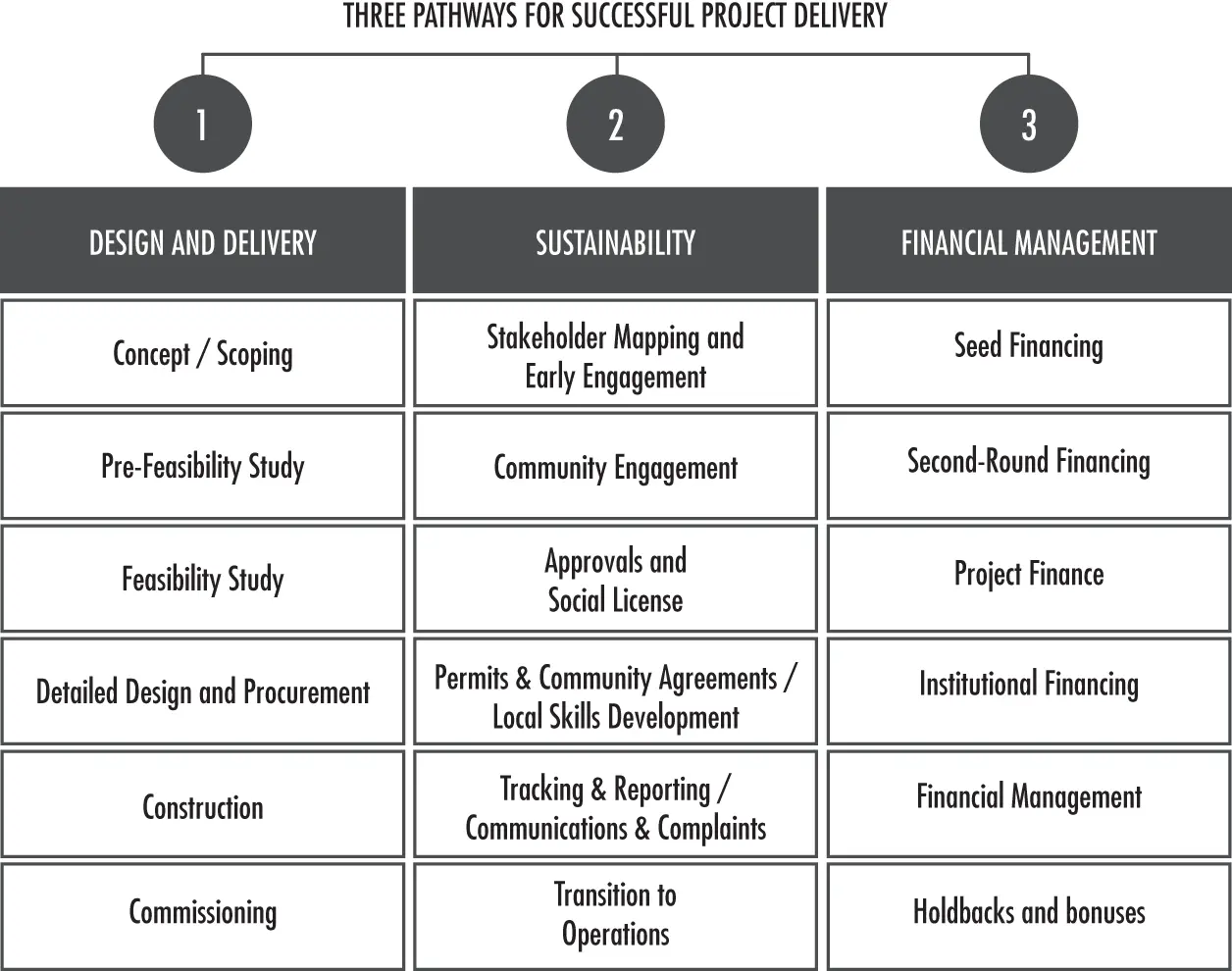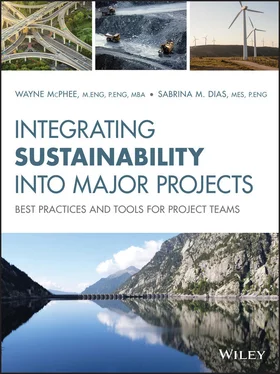Government workers are usually more connected to the geographical location of the project site but being in the same country or region is not the same as living in the community.
And the local community, by contrast, will experience the project directly through impacts to the economy, traffic, noise, environmental damage, and other social disruptions.
These differences in perception of space and time can have a significant influence on how the project is perceived by each of the key players. For example, changing the timespan and location can affect the perception of risk and the balance between risk and reward. A government agency may view the economic rewards to an entire region or country from jobs and taxes generated by the project as a justification for the project risk. However, the local communities who bear the risk of social disruption and environmental damage may not see the risk-reward balance in quite the same way.
The impact of different perceptions of space can often be seen on major projects that have more than one location and where the project benefits and risks are not evenly distributed across each of the locations. In a linear infrastructure project, for example, the positive impacts are created where the urban center is located but the negative impacts could be felt by communities along the highway or commuter rail route that receives the noise and potential environmental impacts from spills, without getting any of the economic benefits.
The difference in the perception of time can create a difference between a typical transactional (often litigious) approach to relationships seen in major construction projects, where the project team, contractors and consultants are often focused on maximizing their share of a fixed project budget (a zero-sum game) and a cooperative approach to relationships where the project team and the local community focus on building trust-based relationships for long-term, mutually beneficial outcomes.
There is no way to eliminate the differences in perceptions of the project in time and space. At a minimum, project teams must understand the large disconnect between the key players on the project and use that understanding to adjust their approach.
There are three main pathways in a project lifecycle that are interconnected and interdependent:
Design and delivery
Sustainability
Financial management
The design and delivery pathway has always been well integrated with the financial management pathway. They are closely linked in all aspects from decision making and design to procurement and construction. The sustainability pathway is newer and therefore not as well integrated, but it is becoming more and more critical in the project lifecycle to understand and integrate project sustainability into the overall project lifecycle. Projects have required regulatory approvals for many years, but the big change is the need for community support, not just to ensure regulatory approval but also to de-risk the project and gain project financing.
The transition from two major pathways to three major pathways has left a gap in project planning and project management. The idea that the sustainability pathway can be managed solely by an outside consultant or a junior regulatory specialist is no longer tenable nor sufficient for delivering successful projects. Projects require senior sustainability leadership that can deliver critical sustainability elements and ensure that sustainability issues and challenges are addressed.

Figure 2.4Three pathways for successful project delivery.
The three pathways each have their own set of approvals and stages to move toward project completion (see Figure 2.4), including project owner approval to move through each stage of the design and delivery pathway, raising financing from internal and external sources, and sustainability approvals that includes permits and community agreements.
Over the life of the project, complex relationships can develop between the three main pathways. There needs to be clear communication among the team members. Everyone needs to understand the challenges and opportunities that other teams face in order to help overcome hurdles and move the entire project forward. A hurdle for one pathway is a hurdle for the entire project, and teams need to understand that everyone is responsible – not just the teams leading each of the pathways. All three pathways need to be part of the same project planning and project scheduling so that everyone understands the potential impacts.
Each of the three pathways are dependent on the other pathways. Having a solid strategy and team for one or two of the pathways is not going to create a successful project without the third stream also producing the required results. In the same way that poor financial management can kill a project with no cash to spend, or a poor design can kill a project with feasibility studies that owners or investors disagree about investing in, poor sustainability management can kill a project with failure to achieve community support, which can lead to protests, lawsuits, and blocked construction sites.
The project team will also change and grow as the project moves along the three pathways. As projects move from feasibility to design and construction, the project team will grow, so it is important to put in place management systems and communication tools to prevent information from getting lost. As the project develops there can also be time gaps between each of the stages and changes in personnel, contractors, and consultants working on the project. Installing systems such as commitments tracking, stakeholder engagement, and managing complaints between project stages is imperative to maintaining project success. See Chapter 8for details on project management systems and tools.
No two major projects are alike, and each project requires a customized approach that fits the type of project, organization, industry, location, and stakeholders. The tools, processes, and best practices outlined in the rest of the book provide a structure that project teams can adapt to build a sustainability program that makes sense for their unique situation. The different types of major projects have unique challenges, and all require a custom sustainability program. Public infrastructure projects in an urban setting will have different requirements than a resource extraction project in a developing economy.
And unfortunately, as of writing this book, there is not yet a project structure that specifically integrates sustainability into project delivery. Each structure, from self-perform to design-build-finance-own-operate to public-private partnership (P3) has advantages and disadvantages. But each structure still requires a well-organized strategy to create a successful, sustainable project.
In this book we discuss techniques that project teams can use to integrate sustainability into project delivery in order to manage the complex requirements of governments and local communities, that have very different perceptions of the project in time and space. Some of these techniques include:
Developing a project charter and goals ( Chapter 5) that looks beyond project completion and short-term cost and schedule targets
Decision making that incorporates social and environmental impacts ( Chapter 10)
Procurement workshops that bring local community engagement into supporting local economic development ( Chapter 11)
Engaging operations team members early in the process to bring longer-term thinking to the project team ( Chapter 13)
Читать дальше













